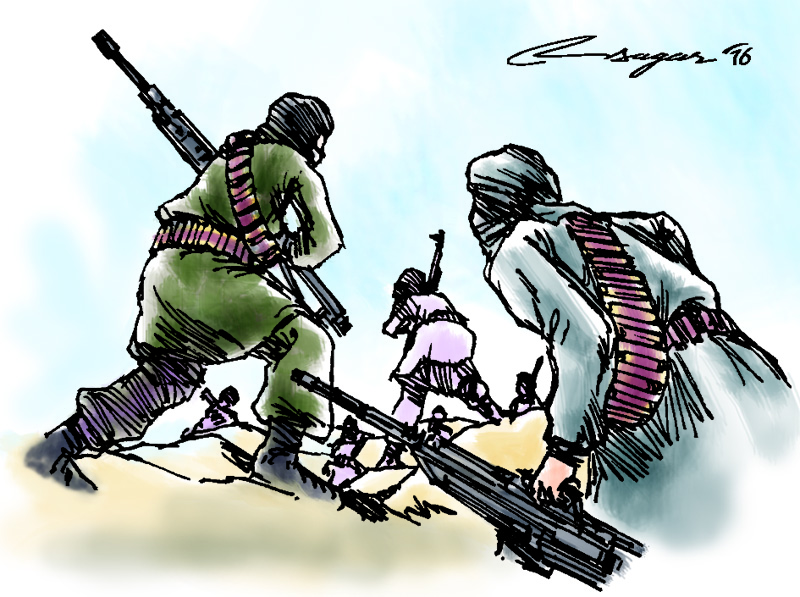The new face of terror: Risks to Nepal
Countering violent extremism and acts of terror requires a holistic approach. It ranges from addressing the grievances through good governance to better intelligence capabilities
Almost twelve years ago Islamic extremists had executed twelve Nepalese citizens in Iraq.
Twelve years after the horrific incident, another twelve Nepalese were killed when the vehicle they were travelling in was blown up by terrorists in Afghanistan.
A few others injured in the attack succumbed to their injuries days later. The spectre of terrorism hit Nepal just days after the US Department of State released its terrorism report that had cited terrorism risks to Nepal.
The report never projected such attacks on Nepali citizens but had highlighted Nepal’s counter-terrorism deficiencies.
Pointing to the lax security system at the international airport, weak controls along the porous Nepal-India border and the lack of proper legislation criminalizing terrorism or material support to terrorist networks, the report underscored the potential of Nepal becoming a transit and staging point for terrorists.
The spate of hackings in Bangladesh, the recent terrorist attack on India’s Central Reserve Police Force convoy in Jammu and Kashmir, the suicide blast in Lahore’s Gulshan-i-Iqbal park and the Kabul bombing that killed the Nepalese security guards all demonstrate how a particular corridor in South Asia remains a hotbed of terrorist activity.
A corridor comprising Bangladesh, India, Pakistan and Afghanistan (BIPA) has been and will remain the foremost terrorist prone area in the world because factors spurring terrorism such as impoverishment, bad governance, State repression and easy access to arms and ammunition are endemic here.
With the highest concentration of Muslims in the world, this corridor could potentially be the largest recruiting pool for Islamic extremists. Even the Global Terrorism Index 2015 ranks Afghanistan, Pakistan and India as the countries most affected by terrorism.
A single terrorist act has multidimensional aspects and implications. Variables such as motive that prompted the act, planning, the financing, signature of the tactics, selection of the target, message conveyed, impact and subsequent investigation and prosecution all indicate that terrorism almost runs on a vicious cycle.
The types of terrorists and their abilities have expanded quite significantly in recent times. An outfit like ISIS is well endowed and operates like an optimal mix of a state occupying vast swathes of land and a commercial corporation.
It maintains the capability to mount attacks in distant areas beyond its control. In between are the shadowy groups and networks like Al Qaeda.
Then, there are state sponsored terrorist groups.
Likewise, the terror tactics and targets have also widened in scope. Targets can generally be categorized into individual, infrastructure/installation and institution. These targets can be further classified as random, random but specific and specific targets.
Targets have ranged from specific individuals as witnessed in Bangladesh to indiscriminate attacks on civilians in Paris.
Similarly, every terrorist attack conveys a distinct message. The terror attack in Paris was a specific but yet random target executed to inflict maximum casualties and to instil fear amongst people all across Europe.
The attackers in Brussels seemed to want to send out the message that borders are no longer impregnable, the security cordons at vital installations can be breached and that they possessed the capability to mount attacks at the heart of western civilization.
The Kabul attack on Nepalese guards also sent a message to all other nationals working for Western powers in Afghanistan that they could easily be the next target.
The impact of the Kabul bombing was palpable. When the Nepalese government dispatched an aircraft to bring back the dead and those wanting to leave Afghanistan, many Nepalese returned on that flight fearing more attacks and many others are reportedly returning as well.
The Nepalese government imposed a ban on its citizens from going to Afghanistan, Libya, Syria and Iraq which will most likely be translated as a victory by those that perpetrated the attack.
Clearly, Nepal also remains vulnerable to the scourge of terrorism. Nepal was a country hobbled by conflict for close to a decade. It is still reeling from multiple conflicts and chronic political instability.
External variables such as Nepal being (until recently) the only country in South Asia to recognize Israel and establish bilateral relations, and Gurkhas serving in the British Army which is considered a prime target by many terrorist organizations also puts Nepal at risk.
Furthermore, since many Islamic terrorist organizations have pronounced India as their target, the prospects of these groups exploiting Nepali territory to inflict harm on India are real. Countering violent extremism and acts of terror requires a holistic approach.
It ranges from addressing the grievances through good governance to better intelligence capabilities. Capacity building of law enforcement agencies and judicial mechanisms that enable them to conduct better investigations and proper prosecutions is imperative.
Better collaboration with other countries through bilateral and multilateral mechanisms is vital. Better monitoring and regulation of the financial system to curb terrorist financing is equally essential.
Most importantly, however, terrorism cannot be combated against until Nepal clearly defines what constitutes as a terrorist act. Only then, can a befitting counter-terrorism strategy can be envisaged and executed.
Thapa is a security and defense analyst.






